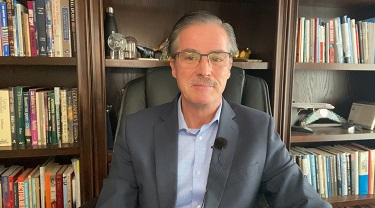Risk is swirling around us everywhere. Risk is rarely ubiquitous, but now is clearly one of those moments. COVID-19 has clobbered the global economy with multiple waves of infection that threaten to swamp large chunks of business activity. All everyone seems to want is for this to stop; we’re longing for a time when the ever-present risk dies a sudden death. Question: Is this the worst time for a discussion about risk…or the best?
Clearly, if you wanted a prime object lesson on risk, now is about as good a time as any. Academics and business analysts will be talking about this for decades, maybe longer. If there’s any benefit to seeing things firsthand, well, we all have a front-row seat for this one.
Businesses entered 2020 hopeful of a decent return. Within weeks, many were fighting for their lives. If they knew then that it wouldn’t be over in a few weeks or months, they might have died of fright. Now, as often happens, other enterprises did exceptionally well; some were in the right place at the right time. Others converted quickly, like those who switched their business models overnight from analog to digital. The survival instinct has brought out the best in some.
This highlights the wide range of reactions to risk. Some can be so traumatized by the experience that they never want to see risk─any risk─ever again. A key example? Excessive prudence in the post-Depression period was a form of self-insurance against the penury of that episode, but it clearly kept the economy back from a proper recovery. That kind of risk-avoidance can and did prove quite unhelpful.
It’s not always that way. The Second World War plunged the planet into a dark and intensely risky period. Those who survived had laid it all on the line; for many of them, what was a little business risk? What resulted was a generation or more of growth, innovation and prosperity, for those who embraced it. In both historical cases, outcomes were related fundamentally to risk appetite.
Every business play is in essence a bet on future demand for a particular product. Since the future is unknown, it’s a risky process. But it’s not a lottery-like game, where the odds are impossibly stacked against the player; it’s a calculated play, based on observable tastes and preferences, ability to pay, potential returns, and so on.
There are several key elements to that calculus. First, it’s generally true that the higher the risk, the higher the potential return. Think of it this way: low-risk ventures may be lucrative, but they attract a lot of entry, which bids down the returns. Higher-risk plays have fewer suitors; as such, when successful, they usually pay well. We reward such risk-takers with patent laws: if you are willing to take outsized risks, you should benefit.
Second, risk-taking is fundamental to progress. In its early stages, innovation is an intensely risky exercise. If you like, it’s a vision for a future product that inventors hope will have future demand. That kind of entrepreneurship is often very hard to come by, but is at the core of a commercially progressive culture. A risk-averse culture isn’t likely to be innovative.
Third, those who successfully take risks tend to get good at it. There’s a learning that accompanies successful risk-taking that mitigates the risk and leads to serial business bets. For example, those who diversify sales into riskier, non-traditional markets and live to tell about it, tend to expand much more quickly and efficiently into multiple markets.
Fourth, there’s an inter-generational element to risk appetite. The never-say-die attitude of the first-generation entrepreneur is typically expanded on by the second generation. However, the third generation is more likely to fear losing what their forebears gained and resist the risk-taking that built the enterprise. In that sense, cultures risk becoming more risk-averse over time.
Finally, where there’s risk, there are enterprising souls who devise risk-mitigants. The insurance industry is a case in point. Export Development Canada was built as a means of mitigating risks exporters face on the international front. Even so, no mitigant eliminates risk; it remains an essential ingredient to a successful commercial system─hence the love-hate relationship.
The bottom line?
It would be tragic if today’s circumstances made us all more risk averse. If so, COVID-19’s consequences would linger with us far longer than necessary. However, if the pandemic teaches us more about the true nature of risk and its returns, those lessons could well be the greatest benefit of our current struggle.
This commentary is presented for informational purposes only. It’s not intended to be a comprehensive or detailed statement on any subject and no representations or warranties, express or implied, are made as to its accuracy, timeliness or completeness. Nothing in this commentary is intended to provide financial, legal, accounting or tax advice nor should it be relied upon. EDC nor the author is liable whatsoever for any loss or damage caused by, or resulting from, any use of or any inaccuracies, errors or omissions in the information provided.






